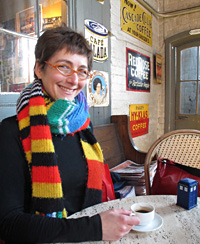Comment #40.
Jlangt64 I will be in touch!
Congrats!
Friday, October 31, 2014
Wednesday, October 29, 2014
Sheep get rained on, you know. On washing wool.
There's an article making the rounds of Twitter this week about superwash wools, and how they are made.
I read it, and learned a few interesting things about how a wool is made superwash. But it was the last line in the article that caught my attention...
I hear this so very often: that wool can't be washed without great difficulty, that wool can't be washed without shrinking. That wool shouldn't get wet. That somehow water is bad for wool.
I get it, I do. We've all had a laundry disaster: a beautiful wool sweater, ruined. We've all been told by our mothers that wool things shouldn't go in the washing machine. And from that, so often, we extrapolate the fact that wool is difficult to wash, and it shouldn't get wet, that water is bad for wool.
This belief is leading people very far astray.
In fact, if you don't wash your wool you're asking for trouble. Moths - those pesky eaters of sweaters, ruiners of stashes, breakers of hearts - are attracted to dirty wool. Wool that has oils from your skin and hair on them. That's the stuff that the moths want to eat. If you're not washing your wool, you're asking it to get ruined.
But wool shrinks, you say! Mother told me!
Wool can felt - get denser - when it is washed. But it's not the water that's making that happen. It's agitation. The washing machine is bad for wool not because of the water, but because of the motion. It's motion - the friction, agitation, rubbing - that causes wool to felt.
A temperature shock - a rapid temperature change in water - can also cause felting. That's why a hot wash causes felting, too. You're shocking the wool. You'd be shocked, too, if you had hot water dumped on you.
In fact, water makes wool more beautiful: it evens out your knit fabrics, it causes the fibres to fluff up and bloom, it opens up your lace work and patterning, it gets any pesky overdye and coffee stains and dog hair off.
Just don't shock or agitate it. You can wash it to your heart's content. Just don't machine wash it.
(Some modern washing machines do have hand-wash cycles - they're basically movement-free and apparently very wonderful. My machine is not that clever, sadly.)
It's really not hard:
See! Easy! Stress-free! Not special equipment required!And so many benefits.
P.S. This is also the secret to Blocking.
And I have to say, although I love Kat's theory, it's sadly just not true.
I read it, and learned a few interesting things about how a wool is made superwash. But it was the last line in the article that caught my attention...
What is the most eco-friendly yarn that also is able to be washed without shrinking? Things like slipper socks can get awfully dirty. (Or will I have to just soak them in cold water?)And my first thought was "here we go again".
 |
| Sheep in the rain. Image from The Fairhope Farm blog. |
I hear this so very often: that wool can't be washed without great difficulty, that wool can't be washed without shrinking. That wool shouldn't get wet. That somehow water is bad for wool.
I get it, I do. We've all had a laundry disaster: a beautiful wool sweater, ruined. We've all been told by our mothers that wool things shouldn't go in the washing machine. And from that, so often, we extrapolate the fact that wool is difficult to wash, and it shouldn't get wet, that water is bad for wool.
This belief is leading people very far astray.
In fact, if you don't wash your wool you're asking for trouble. Moths - those pesky eaters of sweaters, ruiners of stashes, breakers of hearts - are attracted to dirty wool. Wool that has oils from your skin and hair on them. That's the stuff that the moths want to eat. If you're not washing your wool, you're asking it to get ruined.
But wool shrinks, you say! Mother told me!
Wool can felt - get denser - when it is washed. But it's not the water that's making that happen. It's agitation. The washing machine is bad for wool not because of the water, but because of the motion. It's motion - the friction, agitation, rubbing - that causes wool to felt.
A temperature shock - a rapid temperature change in water - can also cause felting. That's why a hot wash causes felting, too. You're shocking the wool. You'd be shocked, too, if you had hot water dumped on you.
In fact, water makes wool more beautiful: it evens out your knit fabrics, it causes the fibres to fluff up and bloom, it opens up your lace work and patterning, it gets any pesky overdye and coffee stains and dog hair off.
Just don't shock or agitate it. You can wash it to your heart's content. Just don't machine wash it.
(Some modern washing machines do have hand-wash cycles - they're basically movement-free and apparently very wonderful. My machine is not that clever, sadly.)
It's really not hard:
- soak your pieces in a sink or tub of lukewarm water for about half an hour.
- a wool-wash like SOAK is specially devised to not need rinsing out, so all you need to do is pour off the water, or drain the sink. (No rinsing! Really! This is actually true!)
- roll them in a towel to squeeze the excess water out
- and lay them flat to dry
See! Easy! Stress-free! Not special equipment required!And so many benefits.
P.S. This is also the secret to Blocking.
And I have to say, although I love Kat's theory, it's sadly just not true.
@wisehilda AND THEN THEY SHRINK, WHERE DO YOU THINK LAMBS COME FROM
— Black Cat Angst (@katangus) October 29, 2014
Monday, October 27, 2014
Epic Crochet Scarf of Madness and Ends
I can tell you precisely when I lost my mind. It was early summer, when I saw the Spring/Summer 2014issue of the Noro magazine. And this scarf. This amazing crochet scarf, in my favourite colourway of Taiyo sock, #23.
I enjoy crochet, and since I'm less skilled at it, there are fewer urges to adapt and change and design than when knitting... I can just follow a pattern and enjoy the ride.
So I started it. I naturally had a ball of that colour in my stash, and I was looking for a bit of light relief after my epic sock project (more on that later) came to an end,
Over the summer and through the fall I've been working away on the little pieces. Each only took a few minutes, and as they were done I checked off the list, and tried not to think about the finishing.
I finished the final of the 79 pieces this week, and because I had some yarn leftover, So I made a few more.
As I was doing that, I did a bit of math: 82 pieces. Each with two ends. That's 164 ends to weave in. And then there's the yarn for sewing them up.
They're blocking now.
The flowers.
And the leaves.
And I must confess I'm a bit frightened.
Saturday, October 25, 2014
"Tempest" - On tech editing a book; giveaway!
One of the joys for me in my technical editing work is the sense of virtually knitting a project. There are only so many hours in a day, only so many knitting hours in a week, only so many projects I can make in my lifetime. I'm very much a process knitter, and I get an awful lot of satisfaction from the technical aspect of knitting: learning new techniques, experimenting with and understanding different constructions, and enjoying a designer's implementation of a design idea. To do a technical edit of a pattern provides all of those experiences, in less time that it would take me to knit it. And it's true, if there's a sample, I have been known to try it on, and have a good fondle of the yarn, and luxuriate in the colours. (The downside is that I don't get to keep the lovely FO at the end, but there have to be some trade-offs...)
Sometimes I am working with a designer, editing individual patterns; sometimes, I am working with a publication, to edit a group of patterns from different designers.
The most fun projects, however, are the big ones: editing a collection of patterns from an individual designer. You know, books!
Working with a designer on a book project allows you to really dig into a designer's vision and design sensibility. Working on a book project allows me to experience and enjoy all the different ways a designer expresses herself.
Over the summer, I had the distinct pleasure of being the technical editor for designer Holli Yeoh, for her just-released book Tempest.
Holli is a wonderful designer, and her design sensibility reflects a remarkable balance: her pieces are beautiful but entirely wearable, interesting in construction and technique, but entirely knittable. It's not easy to do, and Holli is a master of this.
Tempest is a collaboration with Felicia Lo of Sweet Georgia Yarns. All of the projects in the book use Felicia's yarns, and take advantage of her fantastic colour palette. (I've used Sweet Georgia Yarns myself in my books and I adore them.) And just as I enjoyed diving deep with Holli's designs, I know that Holli thoroughly enjoyed diving deep into Felicia's yarns.
Tempest features eleven designs, accessories and garments for women, inspired by the weather and natural surroundings of the west coast of Canada.
Now, Holli and Felicia are in Vancouver, and so were the projects. Tech editing remotely - that is, without the projects in hand that I could examine and measure and explore - adds a degree of challenge to the process. It's often the way I work, and it can be useful to do it this way, in that it allows me to assess and work through the pattern the same way a knitter would - with only instructions and a few pictures to guide me.
The downside is that I don't get to really enjoy (you know, oogle, fondle, try on) the projects in the same way.
Holli and Felicia launched the book at the KnitCity event in Vancouver earlier this month, where I was teaching. Being at the launch party was lovely, and I really enjoyed being able to congratulate them both in person... but the best part of being there? Getting to see the projects in person! I may have even tried a bunch of them on...
To see all the projects, and to learn more, visit the website for the book. The site also hosts tutorials and discussion forums.
You can buy a physical copy of the book online at the Sweet Georgia Shop, or a digital copy from Ravelry.
Holli and Felicia have generously donated a digital copy of the book for me to give away to one of my readers. To win, leave a comment on this post. Please make sure I have a way to contact you - include in the comment either your Ravelry ID or your email address (in a way that the spammers can't get it, write it out with spaces and spell out the at and the dot, e.g. kate dot atherley at gmail dot com).
Deadline for comments is Tuesday Oct 28th, midnight EST.
Sometimes I am working with a designer, editing individual patterns; sometimes, I am working with a publication, to edit a group of patterns from different designers.
Working with a designer on a book project allows you to really dig into a designer's vision and design sensibility. Working on a book project allows me to experience and enjoy all the different ways a designer expresses herself.
Over the summer, I had the distinct pleasure of being the technical editor for designer Holli Yeoh, for her just-released book Tempest.
Holli is a wonderful designer, and her design sensibility reflects a remarkable balance: her pieces are beautiful but entirely wearable, interesting in construction and technique, but entirely knittable. It's not easy to do, and Holli is a master of this.
Tempest is a collaboration with Felicia Lo of Sweet Georgia Yarns. All of the projects in the book use Felicia's yarns, and take advantage of her fantastic colour palette. (I've used Sweet Georgia Yarns myself in my books and I adore them.) And just as I enjoyed diving deep with Holli's designs, I know that Holli thoroughly enjoyed diving deep into Felicia's yarns.
Tempest features eleven designs, accessories and garments for women, inspired by the weather and natural surroundings of the west coast of Canada.
Now, Holli and Felicia are in Vancouver, and so were the projects. Tech editing remotely - that is, without the projects in hand that I could examine and measure and explore - adds a degree of challenge to the process. It's often the way I work, and it can be useful to do it this way, in that it allows me to assess and work through the pattern the same way a knitter would - with only instructions and a few pictures to guide me.
The downside is that I don't get to really enjoy (you know, oogle, fondle, try on) the projects in the same way.
Holli and Felicia launched the book at the KnitCity event in Vancouver earlier this month, where I was teaching. Being at the launch party was lovely, and I really enjoyed being able to congratulate them both in person... but the best part of being there? Getting to see the projects in person! I may have even tried a bunch of them on...
To see all the projects, and to learn more, visit the website for the book. The site also hosts tutorials and discussion forums.
You can buy a physical copy of the book online at the Sweet Georgia Shop, or a digital copy from Ravelry.
Holli and Felicia have generously donated a digital copy of the book for me to give away to one of my readers. To win, leave a comment on this post. Please make sure I have a way to contact you - include in the comment either your Ravelry ID or your email address (in a way that the spammers can't get it, write it out with spaces and spell out the at and the dot, e.g. kate dot atherley at gmail dot com).
Deadline for comments is Tuesday Oct 28th, midnight EST.
Monday, October 20, 2014
Math For Knitters: Upcoming classes, what do you want to know?
Let's just say... hypothetically... that I was working on a class to be delivered online (no, not video, something slightly different) on Math For Knitters.
So, let's say that you signed up for this class. What questions would you want answered? What math problems do you run into with your knitting?
Things I plan to cover in the first half of this hypothetical class:
I promise I'll announce the details of these classes as soon as I can.
So, let's say that you signed up for this class. What questions would you want answered? What math problems do you run into with your knitting?
Things I plan to cover in the first half of this hypothetical class:
- metric/imperial conversions - and why they matter!
- yardage and making yarn substitutions
- "increase evenly across"
- "decrease evenly across"
- 'reversing shapings' and 'at the same time' and how to handle them
- bonus topics: estimating yarn usage, and why sock knitters love a digital scale
- gauge and what it's all about and why it matters; how to check it and what to do if you're off
- gauge adjustments - why and how and when; and when not to
- what if you can't match gauge for a garment - easy solutions!
- garment alterations and adjustments
- body length and shaping
- sleeve length and shaping
- more complex adjustments
I promise I'll announce the details of these classes as soon as I can.
Thursday, October 16, 2014
True Story
Have you seen this gorgeous piece from Laura's new book?
It's Noro. Lovely.
It's a ball of Noro that Laura bought at Lettuce Knit when she was visiting a three or four years ago.
Laura stayed overnight with us, since we live near the shop.
If you follow me on Twitter, you'll know that Dexter is a mischievous dog. Dexter likes to get into things. Dexter likes to steal things. In particular, Dexter seems to really like yarn.
Laura had gone out for a walk, and left the door to our spare room slightly ajar. And she'd left a ball of yarn on the bed.
You can imagine what happened next, I am sure. We manage to wrestle the Noro away from him, untangle it and wipe off most of the slobber.
When Laura was showing me the photos from the book designs, she asked if I recognized the yarn for this particular scarf... Lesson learned: even a good chewing from a bad dog can't diminish the natural beauty of Noro yarns.
It's Noro. Lovely.
It's a ball of Noro that Laura bought at Lettuce Knit when she was visiting a three or four years ago.
Laura stayed overnight with us, since we live near the shop.
If you follow me on Twitter, you'll know that Dexter is a mischievous dog. Dexter likes to get into things. Dexter likes to steal things. In particular, Dexter seems to really like yarn.
Laura had gone out for a walk, and left the door to our spare room slightly ajar. And she'd left a ball of yarn on the bed.
You can imagine what happened next, I am sure. We manage to wrestle the Noro away from him, untangle it and wipe off most of the slobber.
When Laura was showing me the photos from the book designs, she asked if I recognized the yarn for this particular scarf... Lesson learned: even a good chewing from a bad dog can't diminish the natural beauty of Noro yarns.
Wednesday, October 15, 2014
Knockout Knits
Laura Nelkin and I first met when I edited a pattern of hers for Knitty.
If you've been published by a magazine, you'll know that the technical editing process is... rigorous. It's not just about the math of a pattern, but it's also about the style sheet. Each publication has its own way of doing things: standard abbreviations, what's capitalized and not, which brackets and where and how.
And I'm picky. You have to be, to be a technical editor.
I know that some designers find the technical editor's attention to detail rather absurd. (In fact, I remember the first time a pattern of mine was edited... I couldn't believe the stuff that I was being asked about, I couldn't believe that the style of brackets could matter quite so much.)
But as Knitty's lead Tech Editor, I care about these details very much. And I ask a lot of questions. I am sure that some designers find the process challenging. I've been told that I'm tough.
Not Laura, though. Laura is a New Yorker. She's just as tough. And she seemed to appreciate my way of doing things.
Not only did my approach not scare her off, it seemed to have the opposite effect. She asked me to tech edit some of her non-Knitty work.
And last year, she emailed to ask if I could set aside "a chunk" of time in my calendar for her. "How big a chunk?"... "Oh, about book-sized."
I will neither confirm nor deny that I squeed with joy for her. Laura is a deeply gifted designer - she creates truly beautiful and original and interesting lace pieces, jewellery and accessories - and I was over the moon to hear she was working on a book.
And that book, Knockout Knits, has just been released. Full of her trademark gorgeous designs, it's a book of accessories for knitters of all levels. There's some lace, some beads, and lots of texture. There's everyday pieces...
little luxuries
and truly special knits.
The approach of the book is fantastic: it delves deep into some specific stitches and techniques - wrapped stitches, lace and beads - providing tutorials and all the guidance you need to work every project. There are projects for all levels of knitter, all levels of challenge, most using only one or two skeins. She begins at the very beginning, and helps knitters build skills as they go.
And at the end, you've got truly beautiful work to be proud of.
I was honoured and thrilled to work with Laura on it, as her technical editor. And I only made her cry once, apparently...
If you've been published by a magazine, you'll know that the technical editing process is... rigorous. It's not just about the math of a pattern, but it's also about the style sheet. Each publication has its own way of doing things: standard abbreviations, what's capitalized and not, which brackets and where and how.
And I'm picky. You have to be, to be a technical editor.
I know that some designers find the technical editor's attention to detail rather absurd. (In fact, I remember the first time a pattern of mine was edited... I couldn't believe the stuff that I was being asked about, I couldn't believe that the style of brackets could matter quite so much.)
But as Knitty's lead Tech Editor, I care about these details very much. And I ask a lot of questions. I am sure that some designers find the process challenging. I've been told that I'm tough.
Not Laura, though. Laura is a New Yorker. She's just as tough. And she seemed to appreciate my way of doing things.
Not only did my approach not scare her off, it seemed to have the opposite effect. She asked me to tech edit some of her non-Knitty work.
And last year, she emailed to ask if I could set aside "a chunk" of time in my calendar for her. "How big a chunk?"... "Oh, about book-sized."
I will neither confirm nor deny that I squeed with joy for her. Laura is a deeply gifted designer - she creates truly beautiful and original and interesting lace pieces, jewellery and accessories - and I was over the moon to hear she was working on a book.
And that book, Knockout Knits, has just been released. Full of her trademark gorgeous designs, it's a book of accessories for knitters of all levels. There's some lace, some beads, and lots of texture. There's everyday pieces...
little luxuries
and truly special knits.
The approach of the book is fantastic: it delves deep into some specific stitches and techniques - wrapped stitches, lace and beads - providing tutorials and all the guidance you need to work every project. There are projects for all levels of knitter, all levels of challenge, most using only one or two skeins. She begins at the very beginning, and helps knitters build skills as they go.
And at the end, you've got truly beautiful work to be proud of.
I was honoured and thrilled to work with Laura on it, as her technical editor. And I only made her cry once, apparently...
Monday, October 13, 2014
New (Old) Pattern: Northern Lights Socks
A long time ago, in my early days of sock designing experiments, back when I only had two of the Barbara Walker Books, I fell in love with a cable pattern.
And this sock resulted. It's been languishing in the bottom of my sock drawer for some time, the pattern never really properly published.
From my original notes on the design...
Shortly after we moved to Canada, we spent a short time living in Saskatchewan, over a winter. What they say about the sky there is totally true: it really does go on forever, the colors are amazing, and unbelievable things happen. I spent a lot of time looking up. I saw sunshine so bright it hurt and blinding blues like I'd never experienced before. We watched a tornado build and form and cross the city. We were mesmerized by the magic of the Northern Lights. And we saw a sun-dog: a vertical light flares, often like rainbows, caused by the sun reflecting off the ice crystals in the air. The sky has its own personality, in the prairies. The sky is a character in your daily life.
Now I live in downtown Toronto; I don't get to see the sky that often -- too many buildings in the way. So I look at my socks instead.
With some keen support from Keri and the excellent photography of Gillian Martin, I've got my act together. I was very pleasantly surprised to find that more than five years later, the yarn I used is still available: Shelridge Farms Ultra Soft Touch Heather. I love this yarn: it's a substantial fingering weight, with a nice wooly hand, and a touch of nylon for strength. The colorway, Opal, screamed winter sky to me.
The cable is juicy but not too challenging. As is usual, the pattern is written to be worked on DPNs, Magic Loop or 2 Circulars, as you prefer. Two women's sizes, foot length entirely adjustable. The cable patterns are charted.
Available from Ravelry.
And this sock resulted. It's been languishing in the bottom of my sock drawer for some time, the pattern never really properly published.
From my original notes on the design...
These socks were inspired by the winter night sky in the prairies. The cables swoop across the socks like the Northern Lights swoop across the sky, and the yarn colour perfectly captures a cold, sparkling twilight. The Figure 8 Cable was inspired by my first sun dog sighting – a fascinating column of flares in the sky.
Shortly after we moved to Canada, we spent a short time living in Saskatchewan, over a winter. What they say about the sky there is totally true: it really does go on forever, the colors are amazing, and unbelievable things happen. I spent a lot of time looking up. I saw sunshine so bright it hurt and blinding blues like I'd never experienced before. We watched a tornado build and form and cross the city. We were mesmerized by the magic of the Northern Lights. And we saw a sun-dog: a vertical light flares, often like rainbows, caused by the sun reflecting off the ice crystals in the air. The sky has its own personality, in the prairies. The sky is a character in your daily life.
Now I live in downtown Toronto; I don't get to see the sky that often -- too many buildings in the way. So I look at my socks instead.
With some keen support from Keri and the excellent photography of Gillian Martin, I've got my act together. I was very pleasantly surprised to find that more than five years later, the yarn I used is still available: Shelridge Farms Ultra Soft Touch Heather. I love this yarn: it's a substantial fingering weight, with a nice wooly hand, and a touch of nylon for strength. The colorway, Opal, screamed winter sky to me.
The cable is juicy but not too challenging. As is usual, the pattern is written to be worked on DPNs, Magic Loop or 2 Circulars, as you prefer. Two women's sizes, foot length entirely adjustable. The cable patterns are charted.
Available from Ravelry.
Wednesday, October 01, 2014
Visit to Burlington, Roti Lunch, a Couple of Classes
Saturday October 18th I'm visiting the lovely shop Spun Fibre Arts in Burlington, Ontario.
There are two classes on the schedule: a three-hour mitten bootcamp. Suitable for even the newest knitters, this classes teaches everything you know to make mittens for your entire family. Experience knitting in the round not required. Winter is coming, you know...
Mittens are also great for the upcoming gift-giving season...
Speaking of gift-giving, the second class is my Knitting with Wire workshop: design and make your own one-of-a-kind jewelry pieces. Suitable for knitters of all levels - even if you only learned to knit last week - this hands-on workshop allows you to play with some new techniques and materials.
I hope to see you there!
Naturally, I will also be having a roti lunch, which is an important part of my trips to Spun.
There are two classes on the schedule: a three-hour mitten bootcamp. Suitable for even the newest knitters, this classes teaches everything you know to make mittens for your entire family. Experience knitting in the round not required. Winter is coming, you know...
Mittens are also great for the upcoming gift-giving season...
Speaking of gift-giving, the second class is my Knitting with Wire workshop: design and make your own one-of-a-kind jewelry pieces. Suitable for knitters of all levels - even if you only learned to knit last week - this hands-on workshop allows you to play with some new techniques and materials.
I hope to see you there!
Naturally, I will also be having a roti lunch, which is an important part of my trips to Spun.
Subscribe to:
Posts (Atom)







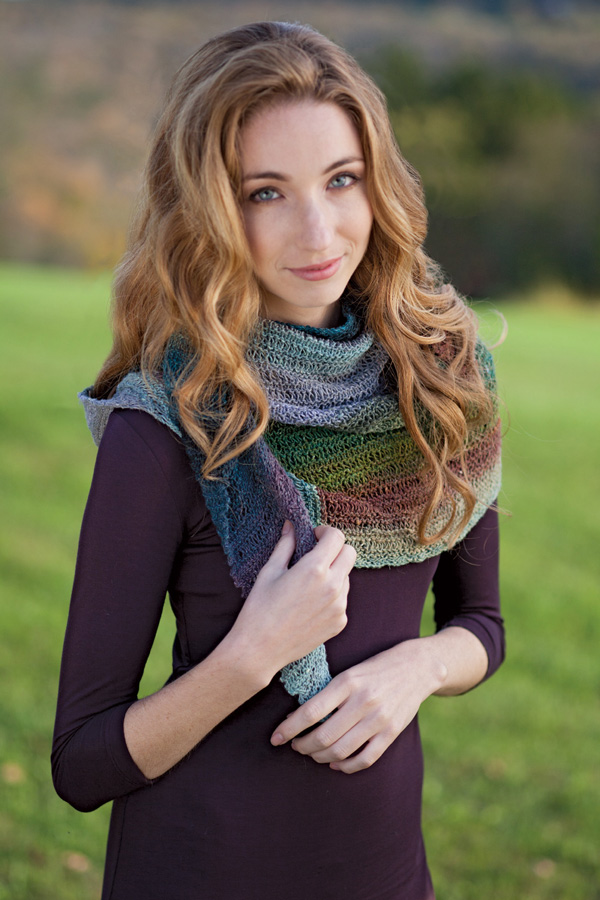
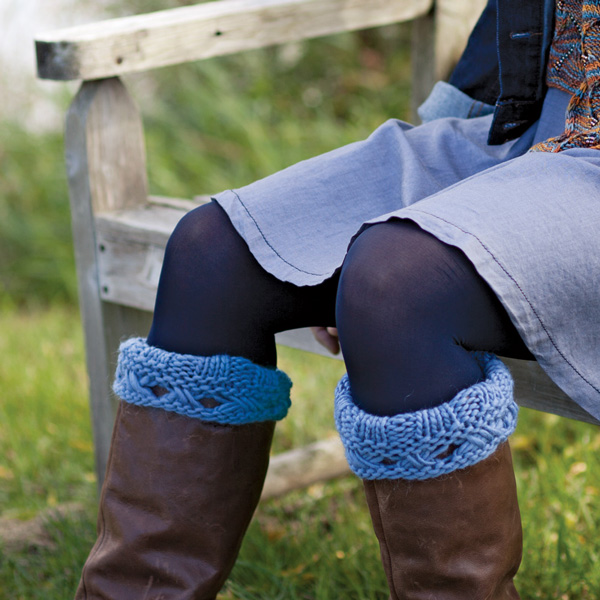
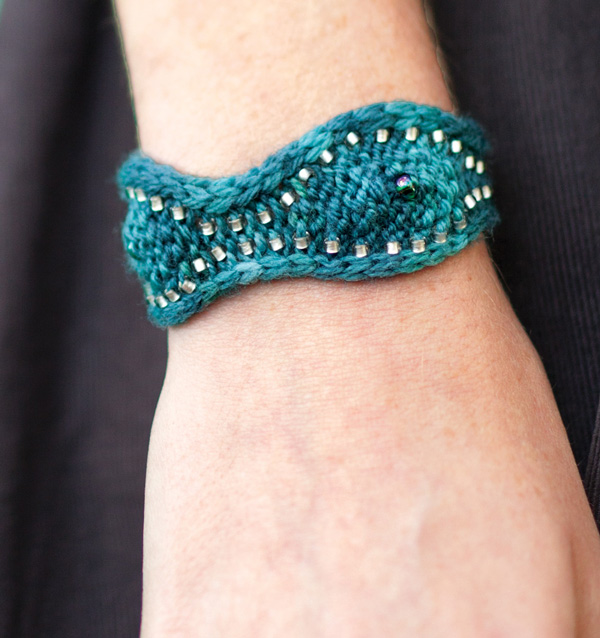
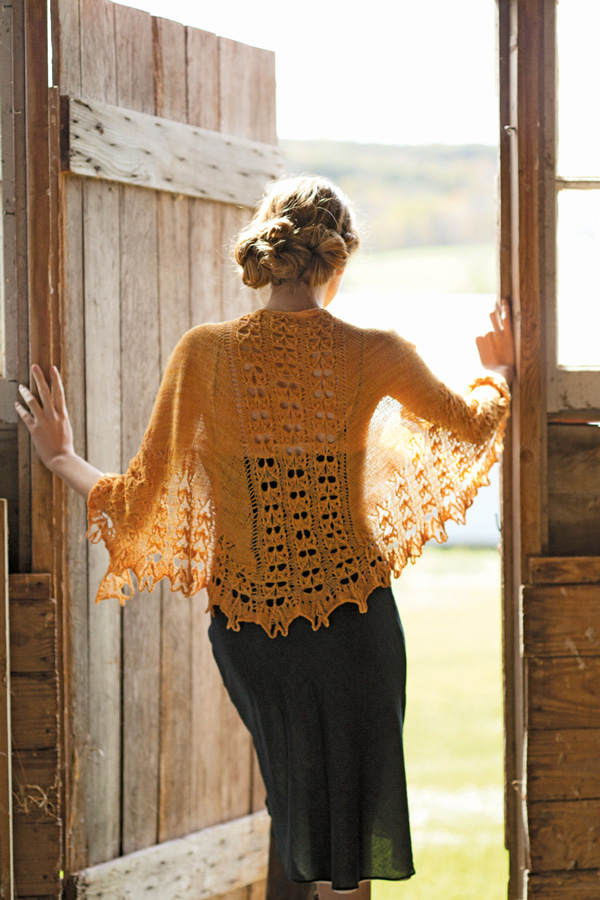
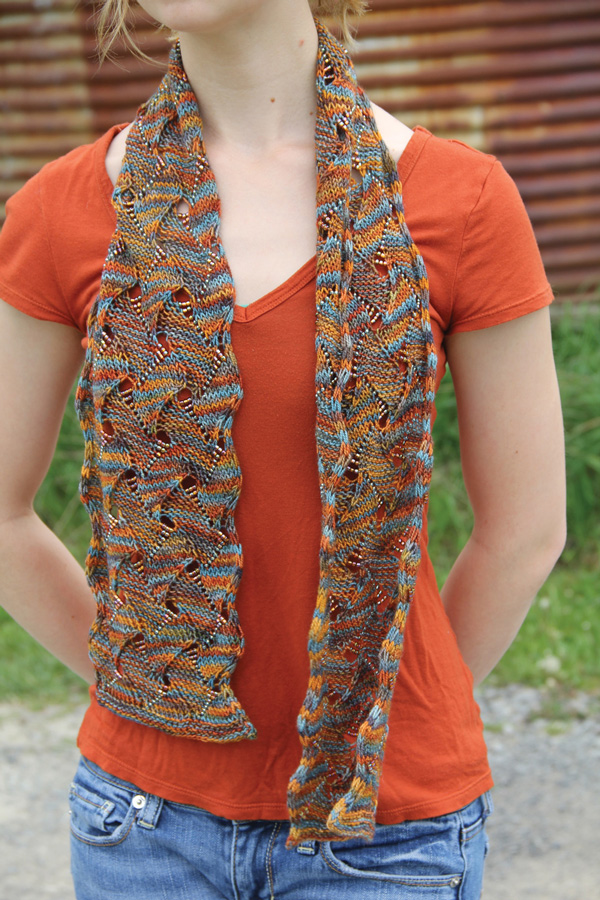
.jpg)
.jpg)
.jpg)
.jpg)









